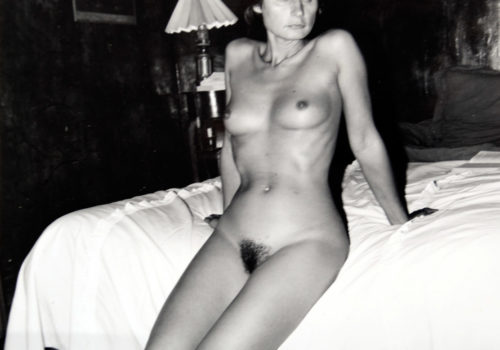His name is Jean-Paul Gavard-Perret. He is a writer, critic, and above all an enthusiast of photography, and more specifically, erotic photography. We will be featuring his column regularly. Here is the first!
Henric never followed any particular school of thought, and instead has always felt equally at ease in the practice of literature, drawing, and photography. The artist has always been wary, and for a good reason, of semiologists who pass every reading or way of looking under the yoke of their methodology. Faithful to artists and writers who touched evil (Manet, Faulkner, Céline, Pasolini, Guyotat, Klossowski), the writer and photographer Jacques Henric has strived to lay bare (in all senses of the word) the expectations he has always toyed with—his muse Catherine Millet at his side.
Playing with light and shadow, with what is shown and what is hidden, Henric mocks those who turn a woman into an object of terror and salvation. He and the woman cultivate a game that tries to leave nothing in the dark but does everything with ludic ambiguity while creating “differance” (to borrow Jacques Derrida’s term) in photography in order to shed all ideological beliefs and illusions and tackle the obscure “accursed share” they conceal.
The eye takes a measure of a body emancipated from judgments such as “dirty” or “ugly.” The model (and much more besides) plays a key part. The memory of her curves has been replaced by the intimate pulsation of his gaze. Henric sacrifices resemblance to Appearance. An ineffable quality emerges in the successive shots of the multiple shades of her complexion.
The portraits of Catherine Millet constitute an unusual visual poem and offer an insight into a love story that the photographer pretends to reveal for the benefit of the voyeur—of course with the consent of his Vestal Virgin in the role of Messalina. What emerges is a narrative of play-acted, and yet genuine, exhibitionism.
It’s a matter of showing more in order to dispense with words and, by taking it out of the private sphere, make it seem like the magic between the two protagonists is inconsequential. However, the intimacy thus revealed is but a ploy: one understands it better by reading Catherine Millet’s autobiographical texts. And her texts on art, too. They illustrate how photography and its shadow work.
Moreover, the photographic pact is not inconsequential but rather a proof of courage: it is rare for an eminent public figure in the world of art to accept such a contract. It opens up a range of possibilities and transfigurations not only of intimacy but also of the “persona” whose body is put on display in harmonious solitude and silence. This photographic pact also speaks to the gaze by refusing words, even though both artists are talented wordsmiths.
The effect of voyeurism is undeniable: Henric’s photographs stir up deep fantasies. Catherine Millet consents, “hiding” any pain and, in her own way, doing what “Pauline Réage” does with her Story of O. However, this muse goes much farther: she is wearing no mask. And while the beauty of the body is capable of arousing a crowd, its message is even stronger. It is a form of destruction of the self by means of self-exacerbation, reminiscent of mad Pierrot playing Jacques and looking at the moon to recognize his own features in its surface.
Jacques Henric, « Catherine Millet »
Chez Higgins
Portfolio #45 from Erotica collection
200€
http://www.chezhiggins.com/jacques-henric-catherine-millet.html
http://www.jacqueshenric.com
















